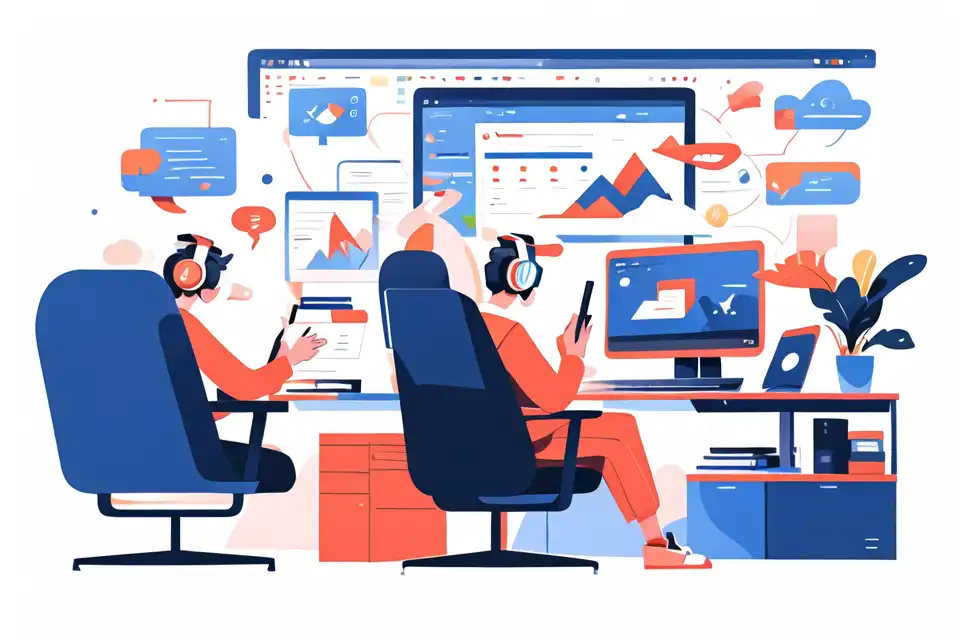b.s.q. Goals for Design and User Experience Teams
Unlock the power of b.s.q. goals for design and user experience teams with our comprehensive guide. Explore key goal setting techniques and frameworks to drive success in your functional team with Lark's tailored solutions.
Try Lark for Free
In the fast-paced and competitive world of design and user experience, organizations are under constant pressure to deliver innovative and user-centric products. In this landscape, the concept of B.S.Q. goals emerges as a driving force for aligning design and user experience teams towards overarching strategic objectives. By understanding and implementing B.S.Q. goals effectively, organizations can enhance their productivity, foster collaboration, and ultimately improve the quality of their products and services.
Leverage Lark OKR for enhanced goal setting within your team.
Understanding b.s.q. goals for design and user experience teams
Definition of B.S.Q. Goals
B.S.Q. goals encompass a set of objectives that are “big” in scope, strategic in nature, and focused on delivering qualitative outcomes. In the context of design and user experience teams, B.S.Q. goals serve as a compass, guiding efforts towards creating impactful and meaningful user experiences while aligning with the organization's strategic direction.
Importance of B.S.Q. Goals in Design and User Experience
The significance of B.S.Q. goals lies in their ability to provide a clear roadmap for design and user experience teams. By emphasizing impactful, strategic, and qualitative objectives, organizations can ensure that their products not only meet but exceed user expectations. B.S.Q. goals promote a holistic approach that takes into account not only the final product but also the journey and experience of the users.
Benefits of b.s.q. goals for design and user experience teams
Enhanced Productivity and Efficiency
By setting B.S.Q. goals, design and user experience teams can streamline their efforts, focusing on initiatives that truly matter. This results in improved productivity as the teams align their activities with the most impactful objectives. Moreover, the qualitative nature of these goals encourages teams to prioritize quality over quantity, ultimately leading to the creation of more refined and purposeful solutions.
Improved Collaboration and Communication
B.S.Q. goals act as a unifying force, bringing together cross-functional teams to work towards a common vision. With a shared understanding of the qualitative impact they aim to create, different teams can collaborate more effectively, fostering a culture of innovation and collective problem-solving. Effective communication is also encouraged as teams align their efforts to achieve the overarching B.S.Q. objectives.
Enhanced User Experience and Customer Satisfaction
Perhaps the most profound benefit of B.S.Q. goals is their direct impact on the end-user. By prioritizing quality and strategic impact, design and user experience teams can craft products and experiences that resonate deeply with users. This leads to heightened user satisfaction and loyalty, ultimately contributing to the organization's long-term success and growth.
Steps to implement b.s.q. goals for design and user experience teams
Step 1: Setting Clear and Measurable Objectives
- Define explicit and measurable B.S.Q. goals that encompass the qualitative impact desired from design and user experience initiatives.
- Ensure that the objectives are aligned with the organization's overarching strategic direction and user-centric principles.
Step 2: Aligning Goals with Organizational Objectives
- Evaluate and align B.S.Q. goals with the broader organizational objectives, ensuring coherence and synergy across different departments and initiatives.
- Establish a clear connection between the B.S.Q. goals and the organization's mission, vision, and values.
Step 3: Establishing Key Performance Indicators (KPIs)
- Identify and define KPIs that will be used to measure the progress and success of the B.S.Q. goals.
- These KPIs should be a mix of quantifiable metrics and qualitative assessments that capture the impact on the user experience.
Step 4: Regular Monitoring and Evaluation
- Implement a robust monitoring system to track the progress of design and user experience initiatives in relation to the B.S.Q. goals.
- Regularly evaluate the effectiveness of the chosen strategies and make adjustments as needed to stay aligned with the B.S.Q. objectives.
Step 5: Continuous Improvement and Adaptation
- Foster a culture of continuous improvement by encouraging feedback and insights from users and stakeholders, allowing for iterative refinements based on real-world usage and feedback.
- Embrace adaptive strategies that enable the design and user experience teams to evolve and respond to changing user needs and market dynamics.
Learn more about Goal Setting for Teams with Lark
Common pitfalls and how to avoid them in design and user experience teams
Pitfall 1: Overlooking User-Centric Goals
- Issue: Focusing solely on strategic and qualitative objectives can sometimes lead to overlooking the critical aspect of user-centric design.
- Solution: Integrate user-centric goals within the B.S.Q. framework to ensure that the end-user's needs and preferences remain at the forefront of all design and user experience initiatives.
Pitfall 2: Setting Unrealistic or Ambiguous Goals
- Issue: Vague or unattainable B.S.Q. goals can demotivate teams and lead to inefficient allocation of resources.
- Solution: Make the B.S.Q. goals specific, actionable, and achievable within a reasonable timeframe, ensuring that they inspire and guide the teams effectively.
Pitfall 3: Inadequate Team Alignment and Collaboration
- Issue: Lack of cohesion and alignment among different teams can hinder the effective pursuit of B.S.Q. goals.
- Solution: Foster a collaborative environment through cross-functional workshops, regular communication, and a shared understanding of the qualitative impact that each team is striving to achieve.
Learn more about Goal Setting for Teams with Lark
Leverage Lark OKR for enhanced goal setting within your team.








